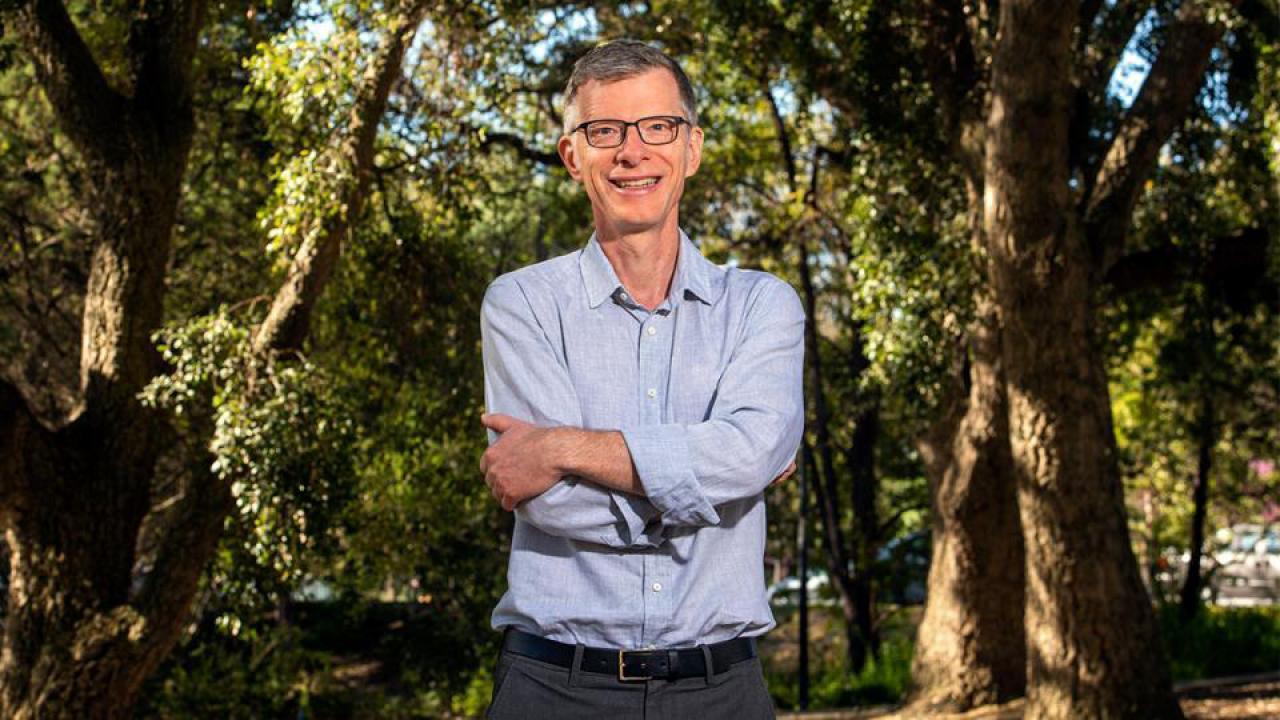
Aggie Square’s Teaching Center: Putting the ‘Public’ in ‘Public Education’
By John Marx
The teaching center at Aggie Square will be unlike any other educational venue on the two UC Davis campuses. The question is how faculty will take advantage of it.
You probably already know how UC Davis professors are starting to experiment through the Quarter at Aggie Square program, which provides the chance to invent new approaches to undergraduate teaching, while offering undergraduates new immersive experiences.
This year’s Quarter at Aggie Square offerings model the program’s goal of helping faculty reach across and off campus. Collaborations among faculty in our colleges and professional schools are taking advantage of proximity to the medical center, to local neighborhoods and their community partners, as well as to close-by organizations like the Language Academy of Sacramento.
Senate faculty may know less about the UC Davis Continuing and Professional Education (CPE) students who will be taking a whole range of classes in the teaching center. Everything from workforce development efforts aimed at students without college degrees to career advancement programs for professionals can be expected. With CPE as an anchor tenant at Aggie Square, its presence lends the name to the Lifelong Learning Building at the center of the complex.
With undergraduates taking courses toward their degrees in classrooms next door to continuing education sessions, we’ll be welcoming lifelong learners into the UC Davis community more emphatically than ever before.
The Aggie Square planning team is examining more possibilities for the teaching center, including a potential new masters degree that blends biomedical engineering and business, as well as programs and/or classes offered by professional schools, including the Graduate School of Management and School of Education.
If the sheer diversity of students and programs already makes the notion of the teaching center unique, its location also will help faculty reach new students and to teach them in new ways.
State-of-the-art teaching center classrooms will share the first two floors of the Lifelong Learning Building with several other key features. On the ground floor, you’ll find the office of Public Scholarship and Engagement’s new hub for community engagement. Floors one and two are the planned home for the Cambridge Innovation Center, which looks to be filled with start-up companies leasing space while they build a head of steam. In the evenings, the Lifelong Learning Building will be the hub for public events — from readings and lectures to musical performances. Right outside in the plaza will be the location for a farmer’s market.
The classrooms themselves should be excellent — think of the rooms at the International Center on the main campus, if you’ve seen them — ready to be reconfigured in all sorts of ways to accommodate different pedagogical approaches. But the real difference will be right outside the classroom doors, where students interested in medicine or public engagement or entrepreneurial business will find themselves in the middle of the action.
Undergraduates will have the opportunity for completely different experiences than they have on our college-town campus in Davis, which is the clear point of a quarter away. Professional students and students taking workforce development courses through CPE will have the same benefits. For both groups, there should be plenty of chances to build networks and make connections.
The contrast between teaching in this kind of electric environment and an ordinary classroom building will be striking. Given that our default right now is teaching remotely, it’s been a little hard to manage my enthusiasm as we’ve been pouring over design drawings and floor plans. While I am acclimating to Zoom, it is very appealing to imagine returning to teach in a place with as much going on as there will be at Aggie Square.
Aggie Square is going to be the kind of place worth leaving your home-office for, a place built on the principle that people work better together and new ideas emerge out of diversity.
As well, the range of faculty and students that will be at the teaching center captures the full breadth of education offered by UC Davis. On any given day, students from ages 18 to octogenarians and from all walks of life will be learning in the classrooms, hanging out for meals at the restaurants, and making new contacts in the meeting spaces of Aggie Square. The whole “public” in public higher education will be there.
These gatherings may generate all sorts of new ideas among our students and new ways for us as faculty and as a public institution to help make their lives better. Maybe students training for a certificate with CPE can start to see a pathway for getting their degree at UC Davis. Maybe our undergraduates get a glimpse of a masters program that could help them down the road. Aggie Square’s mix of learners could give our academic advisers and career counselors new ideas about how to help all of our students plan their careers.
The teaching center at Aggie Square will be a sandbox for faculty: in short, a place to try out new ideas in experiential learning, help students learn through internships, and propel lifelong learning. We’re trying to think big on the Aggie Square team, and we believe that if we do this right, the teaching center will represent a whole new chapter for education at UC Davis.